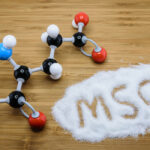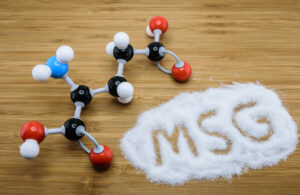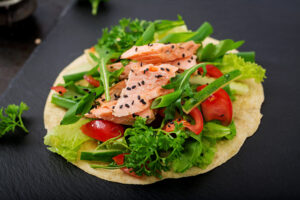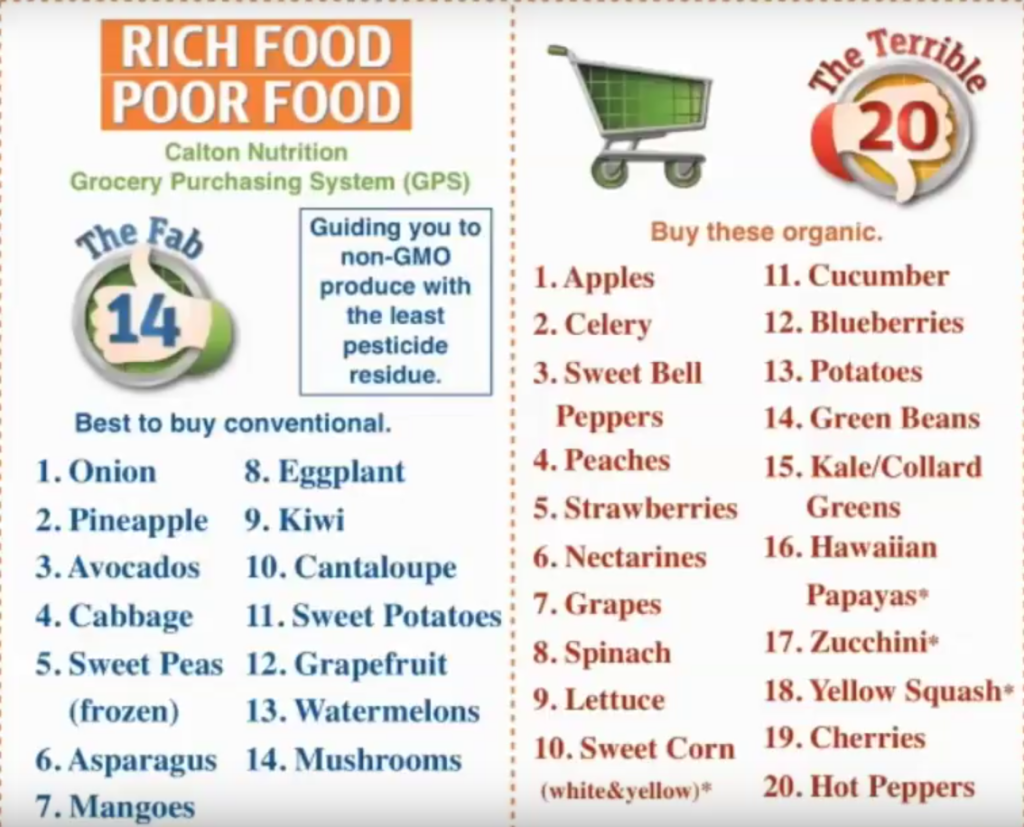Parent Success Story: Nicole
Article At a Glance:
•Nicole is a member of the All-Star Nutrition community who shares with us her experience advocating for her son with autism.

I have written and spoken about my experience with my son, but today I’m excited to share with you more about another member in our community. Nicole is a single mom in Florida who has been on this journey with her son for 10 years. Here is her story:
Nicole’s Story
When Nicole’s son was only 3, she knew that he had some special needs. His temper tantrums were beyond what was developmentally normal, and although she didn’t quite know what was wrong, she was willing to try to make some changes to help him.
Nicole’s son used to eat things like frosted mini wheats, cheese, and peanut butter and jelly sandwiches. When she switched him to a gluten-free, casein-free diet, she saw results within a few weeks: he became more engaged with other children at school, and his temper tantrums became less frequent and more manageable.
Biggest Challenges
Nicole recounts that her biggest challenge lies in all the planning and preparation that it takes to help her son eat foods that fuel him (and not cause inflammation). It was difficult to make the lifestyle shift because everything revolves around food: whether he was going to church, to a friend’s house, or to school, she always had to be mindful of food issues. Thankfully, friends, family, and teachers have all been supportive of this journey and have worked to help meet her son’s food accommodations.
Her Advice
Nicole’s advice for any other parent struggling with a child who exhibits signs of autism is to clean up the diet. She has tried a lot of different treatments and therapies for her son and expresses that by far, removing foods that cause issues with the gut and replacing them with organic, more clean foods has been the biggest factor in helping him. Now 13, Nicole’s son even regulates his food intake and has learned to advocate for his own healing.
*This website is provided for informational purposes only and is not intended as a substitute for the advice provided by a healthcare professional.
References:
Remove These 4 Foods (2R Protocol: Part 1)

What is MSG (and Why is it So Horrifying)?
Article At a Glance:
•MSG is a neurotoxin that can trigger learning disabilities and inhibit brain development. It is especially harmful for children with autism.
•To avoid MSG, cut out processed foods and buy organic.

You’ve likely heard of MSG. You may associate it with Chinese food. You probably know it’s something that’s not healthy. But even though MSG is a buzzword in the health and wellness community, there’s still a lot of misconceptions about what it is.
MSG stands for Monosodium Glutamate and is commonly used as a flavor enhancer. It is often found in Asian foods but is also used in a variety of different processed and packaged foods as well. And to put it bluntly, this chemical can wreak havoc on our kids’ systems. It’s what is called an “excitotoxin,” which means that over time it can overstimulate neuron receptors until they become too exhausted to function properly. As a result, brain development is inhibited, which can trigger learning disabilities.
As we’ve talked about many times on this blog, children with autism are especially vulnerable to toxicity in the body. They already have a compromised ability to fight off dangerous chemicals, and consuming products with MSG would just be worsening their already fragile bodies.
Avoiding MSG
The ways to avoid MSG are the same way to avoid any other poison in what we eat: steer clear of processed foods by shopping on the outside aisles of the grocery store (remember, the goal is to opt for lean proteins and produce). And don’t forget to avoid pesticides by buying organic!
*This website is provided for informational purposes only and is not intended as a substitute for the advice provided by a healthcare professional.
References
Excitotoxins, MSG, and Its Hidden Names
Remove These 4 Unhealthy Foods (2R Protocol: Part 1)
What Fruits & Vegetables Should I Buy?

Remove These 4 Unhealthy Foods (2R Protocol: Part 1)
Article At a Glance:
• The 2R Protocol Refers to 1) Removal (of certain foods and toxins) and 2) Repair (Using supplements and foods to heal the gut)
• The 4 main things to remove from the diet are wheat, sugar, dairy, and pesticides, as they can cause a number of issues in the gut and the brain
We’ve talked a lot about this lifestyle change of healthy living that can help our children’s bodies improve naturally and greatly reduce the symptoms of autism. It all centers around the microbiome, which is sort of the “engine” in the gut that drives the body and brain either to dysfunction or to healing.
There’s a lot to know and learn, and it can be a little overwhelming to take it all in. I understand that completely: it’s a change that doesn’t happen overnight. To make things a little less intimidating, it can be helpful to think of things in what I call the 2R Protocol System. To put it simply, this means that our two part system of healthy eating and living means to 1) remove, and 2) repair. For this article, we’ll start with what we need to remove from our children’s nutrition to help them thrive. Especially for kids (and adults!) with a compromised immune system, these lurking culprits that are unfortunately all too common in the typical American diet can wreak havoc. Here they are:

Wheat
Is bread really so bad? Unfortunately, it can be. While actual celiac disease is relatively rare, we are learning more and more about gluten sensitivity and how it can cause issues in the gut. For example, some of the proteins in wheat are known to act as gut irritants (meaning that they cause inflammation). Additionally, wheat can disrupt the microbiome of bacteria and even increase vulnerability for certain brain problems. While grains were once considered to be essential and occupied the largest section of the food pyramid (a greatly outdated model of eating), we now know better, and for children with compromised immunity, we can safely eliminate this food group.
Sugar
Sugar is all around us and hard to avoid completely, but we need to take steps to drastically reduce it from our children’s intake. Foods high in sugar also can disrupt the balance of good bacteria in the gut and cause inflammation. Refined sugars in particular (like high fructose corn syrup found in so many packaged foods) should be avoided like the plague.
Dairy
This is another type of food that may be impossible to eliminate entirely, but you can still make efforts to cut back on it. Like the other foods on this list, dairy is known to irritate the gut (are you sensing a pattern here?). If your child loves milk, there are lots of great alternatives, and even making better choices like grass-fed organic cheese can help a lot.
Pesticides
Pesticides are used by agricultural manufacturers to sustain the shelf-life of the food, but at a great personal health cost to us. These toxins are foreign invaders to our bodies, and, once again, can irritate the gut, cause a weakened immune system, and even may be a contributing factor to cancer. Think about it this way: the very word “pesticide” tells us this substance is meant to kill pests (bugs, other organisms). Why would you want to put that in your body? Avoiding pesticides isn’t easy, but it’s worth it.
References
11 Ways Gluten & Wheat Can Damage Your Health|Paleo Leap
Is Gluten Killing Your Brain | The Kresser Institute
Best Practices For Buying Eggs, Dairy, and Snacks
*This website is provided for informational purposes only and is not intended as a substitute for the advice provided by a healthcare professional.

Best Practices For Buying Eggs, Dairy, and Snacks
Article At a Glance:
• Smart shopping for eggs means knowing how to navigate different marketing terms on the labels
• It’s best to limit intake (or even avoid) consuming dairy
• The healthiest snacks are naturally-occurring, low in sugar, and have only a few ingredients
Helping a child with autism overcome behavioral and emotional challenges starts with healing their gut through nutritious food, which all begins with making smart decisions at the grocery store. As we’ve done previously on this site, let’s go through some guiding principles for shopping:

Eggs
Eggs are one of the best foods we can feed to our children. Sometimes referred to as a superfood, they’re packed with protein, good fat, and nutrients. The most confusing thing about buying eggs are the marketing terms used on the label. Here’s a rundown of what they all mean:
Pastured Eggs- These are from chickens that live outdoors (and are therefore much healthier). The yolk is a deep orange-like color because it contains more nutrients (like omega-3s, which are great for brain development).
Organic– This simply means that there are no pesticides or antibiotics, and that the chicken feed was not genetically modified.
Cage-Free- While this may be a good choice for families concerned about more humane treatment of animals, just because the chickens were not in cages does not necessarily mean they were outdoors (though they still do have more room to move).
Free-Range- There is no real standard for this term and it only really means that the chickens have some amount of time to move freely.
100% Vegetarian-Fed– While this may sound impressive and health-conscious, it means that the chickens were fed a non-natural diet (as they naturally eat insects and grubs), so it’s just another marketing message.
Overall, when it comes to eggs, the more expensive brands aren’t necessarily the best. Test out a few different types and look for things like a dark yolk and a hard shell (as these indicate more nutrients).
Dairy
Much has been written and said about dairy among health gurus in recent years. From my end, I have found no good evidence of reasons to consume dairy from a dietary perspective. There are a number of great alternatives for cow’s milk, for example, and we’ve increasingly seen ways that dairy can irritate the gut. If you or your child cannot give it up completely, opt for grass-fed organic cheese, limit the quantity consumed, consider supplementing with digestive enzymes, and stay away from things like yogurt (which often has loads of sugar and artificial coloring).
Snacks
The best advice I can give you about snacks is to choose foods that are natural and whole. Things like an apple, raw nuts, etc. If you do decide to give your child something that is packaged, choose something that has few ingredients that are easy to pronounce and understand. The RXBAR™ can be a great option!
References
6 Reasons Why Eggs Are the Healthiest Food On The Planet
17 Science-Based Benefits of Omega-3 Fatty Acids
The 9 Best Nondairy Substitutes for Milk
The Toxins In Foods That Big Companies Don’t Want You To Know About
*This website is provided for informational purposes only and is not intended as a substitute for the advice provided by a healthcare professional.
Eating Healthy At Social Events
Article At A Glance:
• Social Events (such as birthday parties and barbeques) can test our resolve to help our children eat in a way that helps heal them.
• With some forethought and preparation, your kids CAN enjoy parties while still maintaining healthy eating habits.

Birthday parties are a staple of the childhood experience. What kid doesn’t love to hit the piñata, jump on the inflatable castle, and play games with their friends? But if your child has autism and you’ve committed to ensuring that he/ she is eating foods that help them maintain best optimal health, what can you do about the inevitable sugar-loaded foods lurking at such parties?
It’s true that navigating social events can be a challenge, but you do not have to forego them completely. Here are some tips to help stick to healthy eating even at parties:
Communicate With The Host
I tend to reach out before the event and see what kinds of foods will be served. If it’s a birthday party, cake and ice cream is almost inevitable, but you may be surprised to learn that other families serve healthy options as well. The only way to know is to ask.
Serve A Large Meal Beforehand
If the social gathering will in fact have foods that could be a temptation, I often serve a filling meal to my son in the hopes that he will be so full and satisfied that the junk foods will not be as appealing.
Provide “Safe Foods”
In cases where social events involve adults as well (such a family reunions or barbeques), I bring along safe alternatives to favorite foods that are tasty and healthy. For example, I’ll bring grass-fed organic hot dogs from Trader Joe’s to throw on the grill.
Committing to this lifestyle is certainly not easy, and when parties and other social gatherings come up, it’s tempting to throw up your hands and say “just this one time won’t hurt.” I challenge you, however, to stick with it. To take the time and energy to help your child eat better (even if not perfectly) through preparing healthier alternatives. Yes, there may be some people who think you’re being too extreme, but you’re not doing it for them: you’re doing it to help your child reach his/ her full potential. And that’s more than worth the extra effort.
*This website is provided for informational purposes only and is not intended as a substitute for the advice provided by a healthcare professional.

Use These Principles To Eat Healthy At Restaurants
Article At a Glance:
• Restaurants usually serve foods that are low in quality and high in pesticides, making it very difficult for children with compromised immune systems to eat healthy.
• Since it’s near impossible to avoid eating out altogether, use these guiding principles to help you discern the best food choices.

Eating out is not very good for us. Not only is it expensive (a study found that the average American eats out 5.9 times a week!), but portion sizes are often gigantic and added sugars, ingredients that are hard to pronounce, and chemicals abound in foods served at restaurants. This is a problem for anyone concerned with eating healthy, but most especially for families of children with autism who are seeking to help them heal their gut and live up to their potential.
Still, it’s hard to deny there’s something exciting about going somewhere to eat as well. We all seem to enjoy it, and for adults, that’s one less meal we have to cook, dishes we have to clean, etc. It’s nice to be waited on. Also, life gets busy, and even though we are always striving to prepare good food at home, as parents we know that doesn’t always happen. So while I don’t suggest you make eating out a regular habit, as a single dad, I understand that it’s part of life and not something that can be avoided completely. With that in mind, here are some guiding principles to help minimize the damage and make the best food choices possible while out to eat:
NEVER Order From A Kid’s Menu
Without fail, the kid’s menu at restaurants is full of garbage foods that really are the worst of the worst: macaroni & cheese, hot-dogs, crappy burgers, french fries, etc. It’s very upsetting that the lowest quality foods are marketed specifically to our children, so as their greatest advocate, we as their parents need to do better for them and redirect their attention to better options.
Keep It Simple
One of the most difficult things about eating healthy at restaurants is that we don’t know exactly what’s in the food (especially with creamy sauces and complicated recipes). Therefore, it’s best to keep it simple and opt for a dish that has a protein, vegetable, fat, and fruit. For example, if eating at a Mexican restaurant, a good option would be chicken fajitas with a corn tortilla burrito and avocado. Corn is better than flour, and while this meal still is genetically modified and likely contains pesticides, it’s much better than a hot dog and onion rings (once again, the goal is to minimize damage).
Go For Lean Meats
When ordering protein at restaurants, opt for the leaner meats (like chicken and fish). The reason is that the chemicals and hormones found in conventionally-raised cows accumulate in their fat deposits, so the fattier cut you get, the more toxins you’re consuming. If you do choose to order a darker meat, go for the leanest cut possible.
Fast Food Dining
If restaurant eating is bad, then fast food restaurants are really bad. But again, I know it’s part of life, so let’s talk about how to do it healthier:
First off, don’t be fooled by the typical sandwich restaurants. Places like Subway and Jimmie John’s are certainly better than McDonald’s, but that’s a low bar to clear, and the truth is that these kinds of sandwiches are not as healthy as they are marketed to be. Thankfully, there are better options: restaurants like Chick Fil A, Boston Market, Chipotle have things on the menu like grilled chicken nuggets, fresh salads with chicken, rotisserie meat, and cut-up fruit.
*This website is provided for informational purposes only and is not intended as a substitute for the advice provided by a healthcare professional.
References
2018 Dining Trends Survey: Highest Tippers, Social Media Habits, and More
Beware Of the FrankenChip
What Fruits & Vegetables Should I Eat?
Food-Pesticides & Other Chemicals

How Your Gut Connects with Your Brain
Welcome to My 2R Protocol Video Series
Thanks for joining me on this video series where I’m going to walk you through a number of simple steps to help to reduce the symptoms of autism in your child.
My son was diagnosed shortly before his third birthday, and the doctors said that there was nothing I could do to help him. I saw his pain, and I refused to believe it. Dedicated all my time and resources, researching and finding ways to help my son reach his potential.
Backed by Science
And along that journey, I discovered a system backed by science to help heal the underlying dysfunction of autism and help heal my son. In this video series we’re going to discuss the underlying causes of the majority of autism symptoms, the importance of food and what major toxins can easily be removed from your child’s diet, and the type of supplements they can take in order to speed up that healing process.
I’ve taken the time to do the research and put together these videos, but if you want to see results in your child, then simply watching a video isn’t going to cut it. You need to take action, and implement the basic steps I give you, because knowledge isn’t power. Applied knowledge is power. I can give you all the information in the world, but if you don’t do anything with it, then it’s just entertainment.
It All Begins with the Gut
Now before we get started with the tips, it’s important to understand that healing autism from the inside out begins with the gut, which is simply everything from the mouth down to the large intestines. Scientists from Harvard and John Hopkins, just to name a few, have discovered that there’s this dynamic link between the gut and the brain. Let me explain it to you. Have you ever felt nauseous before giving a speech, or had that gut feeling either to do or not to do something?
Well, that’s because there’s a direct line of communication from your gut to your brain. Yes, your gut actually speaks to your brain, and vice versa. I know it sounds crazy, but it’s true.
In fact, the area of your brain that your gut communicates most with is responsible for things like mood, sociability, mental health, human connection, and a host of other variables affected by ASD. Interestingly enough, 70% of people with autism also have gastrointestinal problems and issues related to their gut. There’s been several studies conducted, which have shown that the majority of people with ASD have an imbalance of good and bad bacteria, and specifically more bad than good.
“Bad Bacteria”
This excess bad bacteria inevitably leads to an overproduction of toxins, which weakens the lining of the intestines, making it permeable, which leads to something known as leaky gut syndrome. Now, leaky gut syndrome simply means that your intestinal lining, which is your gut’s filter, has holes in it. So it allows toxins, yeast, undigested food, and other dangerous pathogens into the bloodstream. And the effects of that, well, once those toxins, particles, and pathogens get into the bloodstream, it triggers the immune system to feel stress and danger.
And as a response, the body goes into defense mode and becomes inflamed, which in turns puts pressure on the brain, which also intensifies or creates behaviors of ASD. Does that make sense to you guys? All right. If there’s nothing else you get from this video, just know that autism is a fire, inflammation is the gasoline. One Arizona state study revealed the results of chronic inflammation, which is just inflammation longterm, and the parallels in behaviors of ASD is shocking. Here’s what they found happened just with inflammation. There was brain cell death and reduced brain cell formation. So in other words, brain cells were dying, and less brain cells were being formed.
What is Oxytocin?
There was a reduced response and release of a hormone called oxytocin, which is just basically responsible for human interaction, love, human connection, increased repetitive behavior, sensitivity, and issues with movement and coordination. Do any of these things sound familiar? I know. And here’s the kicker. In that same study, when they introduce probiotics and an anti-inflammatory diet to the test subjects, inflammation went down, and virtually all other behaviors improved dramatically, and in some cases went away completely. That’s why it’s so critical to A, heal the gut, and B, reduce inflammation inside of our children with autism.
So let’s put this into layman’s terms for you. Your gut directly communicates with your brain. If you have an unhealthy gut, you have an unhealthy brain. The majority of people with autism have a bacteria inbalance in their gut, which leads to toxins and pathogens entering their bloodstream, which creates a chronic inflammatory response inside the body. That inflammation puts pressure on the brain, and intensify, or even creates behaviors and symptoms of ASD. So now we can agree that healing the symptoms of autism begin with healing the gut and reducing inflammation. But where’s the best place to start?
Lets Start with Elimination
So with my son, I started with eliminating one of the top foods that causes issues in the gut, brain, and is a major source of inflammation. What is it? You guessed it, wheat, which includes gluten. And this doesn’t mean running out to the store and buying all the gluten free alternatives, which the majority of the time are worse than what they’re replacing. Now I know how challenging it is to change anything, especially with our kids. Remember, I promised you that I would do my part and give you the steps to take, but you need to take the steps. That said, please take action. The simplest way I recommend to do this is just to commit for seven days to remove wheat from your child’s diet. Just give it a shot. I guarantee you’ll start noticing a difference within seven days.
To Sum it Up
So in summary, in this video, we covered the gut-brain connection, how inflammation is the gasoline on the fire we call autism, and one simple action step you can take in order to help your child, which is to commit to removing wheat from their diet for seven days, and see the results for yourself. Remember, knowledge isn’t power. Applied knowledge is power. So please start today and remove wheat from your child’s diet. Again, just try it for seven days, and see if you notice a difference. Until the next video, I wish you the best.
Getting the Family on Board
Article At A Glance:
• Oftentimes, extended family can be a barrier to making a complete lifestyle change in terms of nutrition.
• The effectiveness of changing your approach to food and nutrition can be a powerful way to convince others, as they will see the vast improvement in your child’s behavior and mannerisms.
• The way that we help shift society’s view of autism and help cure more children is by using our own lives as examples.

One of the biggest challenges of a lifestyle shift (in terms of healthy eating) is family. It can be difficult for grandparents, aunts and uncles, and cousins to understand why you’ve chosen to adopt a different (even radically different) approach to nutrition and wellness for your child. Well-meaning adults can undermine your child’s progress (and also your authority as a parent) by providing foods at family gatherings that don’t align with your goals for your son or daughter. Others may think you’re being too extreme in your approach. One of the hardest parts about creating these changes will be those who are close to you who don’t see the value in what you’re doing or don’t believe it will work.
Overcoming Resistance With Results
So how do we move past these barriers? How do we convince our family and others close to us that providing supplements and healthy foods free of pesticides and toxins truly can make a difference in the behavior and attitude of a child with autism? The answer is quite simple: let the results show them. Here’s what I mean:
In my experience with my son, it certainly took time for my family to really “buy in” and believe in what we were doing. However, once they saw that he could hold conversations, that he could better regulate his own temperament, and that overall we had a much calmer and healthier relationship, they became truly convinced. They began to ask questions about our nutritional habits and even started started asking me for grocery lists and shopping advice. It was amazing!
The Ripple Effect
Friends, this is how it works. This is how we change minds and help heal more children. It is a ripple effect. Don’t be discouraged if others think you’re crazy for going organic or using supplements in order to help your son or daughter. Stand up for your lifestyle in conversations, but don’t feel the need to convince someone immediately through your words; instead, let the results do the talking.
The mainstream medical community has yet to really catch the vision of how improved gut health and wellness are the key to curing our children, so unfortunately we cannot rely on them for help in this area. We hope that in time this information will seep into the general public, but if that’s going to happen, it will be through us. If you stick with this lifestyle change, people will notice. Schoolteachers will take note. Neighbors will see the differences. Even other parents waiting in the halls of the therapy office will ask what changed. If you truly commit to changing your family’s approach to nutrition (as it relates to your child’s autism), we can show the effectiveness of this lifestyle and change our society.
*This website is provided for informational purposes only and is not intended as a substitute for the advice provided by a healthcare professional.
References
My Story: How It All Began
What Fruits & Vegetables Should I Buy?
Getting to the Root of Autism
Discover What the Medical Community Is Hiding From You
5-in-1 Bio-Heal Probiotic FAQs
Dosage
Q: What is the recommended serving size?
A: We recommend giving ½ scoop daily to a person weighing 50 lbs or less. For those weighing over 50 lbs, we recommend giving 1 full scoop. For individuals over 101 lbs, we recommend giving up to 2 scoops.
Q: How long will one container last?
A: Bio-Heal will last 1 – 4 months depending on the recommended dosage.
Q: I lost my scoop! How do I get a replacement?
A: Unfortunately, we do not offer replacement scoops at this time. Please use 1/4 tsp for a half scoop and 1/2 tsp for a full scoop.
Serving the Probiotic
Q: What’s the best way to offer this probiotic to my child?
A: Bio-Heal can be mixed into any food or drink that is room temperature or cooler. We do not recommend serving it in water because your child will be able to see it; it is better disguised in juice or a smoothie or a food such as applesauce, yogurt or cereal.
We recommend adding the powder slowly and stirring it until dissolved if mixing it into a beverage (a small, inexpensive milk frother is ideal for dissolving the powder into a liquid). Additionally, it is recommended you do not mix this in front of your child because even though the probiotic is flavorless/odorless, some children are sensitive to even a thought that there might be something new or different in their beverage.
Here is a link to a video with tips and tricks for serving.
Q: My child is very sensitive and refuses to try anything new.
A: Look at your child’s current food intake for opportunities where this can be added without detection. Does your child drink milk, chocolate milk, juice, smoothies? Does your child eat cereal, pasta, yogurt, applesauce? These can all be great foods to hide the Bio-Heal.
Q: What is the best time of day to take Bio-Heal?
A: Consistency is key, so have your child take it at approximately the same time each day. It’s more important to be consistent than to make sure the timing is perfect.
Storage
Q: Does Bio-Heal need to be refrigerated?
A: The probiotic has been freeze-dried and pressure sealed. Not until the pressure seal has been opened do we suggest to store it in the fridge for moisture control. We definitely understand that some of our customers live in extreme heat. Our headquarters are in Florida and the shipments we receive for our personal use are not shipped to us on ice and are still effective. Bio-Heal probiotic has a shelf life of 2 years. Leaving the probiotic out for a few days will not materially change the potency of the probiotic if consumed within its shelf life.
Ingredients
Q: Is Bio-Heal Gluten-free? (Nut-free? Dairy-free? Egg-free?)
A: Yes, this product is gluten free, egg free, tree nut free and dairy free. There are no fillers.
Q: Is Bio-Heal Soy-free?
A: Bio-Heal contains the ingredient phosphatidylcholine, which is derived from soy. However, phosphatidylcholine typically does not contain sufficient soy protein residues to provoke allergic reactions in the majority of soy-allergic consumers
Q: Is Bio-Heal Organic & GMO Free?
A: No, Bio-Heal is not certified organic or GMO free. We are currently working on obtaining that certification.
Q: Where can I find the ingredient list?
A: You can find the ingredient list and a picture of the label here.
Product Efficacy
Q: When will I see results?
A: Unfortunately, there is not a specific time-frame you can expect, as each person and situation is different. One thing to consider is that healing the gut and reducing inflammation is a process, not a single event; it doesn’t happen overnight. In most cases, gut dysfunction and dysbiosis take years to develop, and healing can take time. Please realize that the science is real. Give it time, and continue to make lifestyle changes that will help the gut and reduce inflammation in addition to taking the product.
Q: How long will I need to take this or how long will my child need to be on a probiotic?
A: We recommend using the product as long as you find it helpful.
Q: Will this product help a child with ADHD? (ADD? Anxiety? OCD? Depression? Bipolar Disorder?)
A: I’m not a doctor and can’t give medical advice. I would suggest reviewing this with your doctor and getting their opinion.
Q: My child is Autistic but has no known digestive issues. Will this help?
A: While I’d love to be able to provide you with specific results, each person and situation is different in things like genetic makeup, environment, diet, pre-existing conditions, etc. and the way the product initially affects them can vary.
We’ve heard positive reports from many parents, and one of our ingredients has been linked to improved executive function and complex language. That said, I can’t tell you for certain if it will help your child.
My suggestion would be to try it and see. The best case scenario is that you’ll improve the health and well being of your child. If the product doesn’t work for you, you can receive a full refund.
Q: Can anyone take Bio-Heal?
A: Absolutely! Our patent pending formula is ideal for anyone looking to improve their gut health.
Side Effects
Q: Are there any side effects?
A: Because there are so many factors involved, I can’t say whether or not you or your child will experience side effects. Some people do experience what is known as the Herxheimer reaction.
When you take Bio-Heal, it works to heal the lining of the gut and crowd out the bad guys with good guys.
During this process, the bad guys (yeast and bacteria) die. As they die, they release waste and something called endotoxin, which, as the name implies, is slightly toxic to the body. And because the immune system mounts a response to this endotoxin, we usually feel worse as we cleanse.
Additionally, the yeast and bad guys live on sugar, and when they’re dying, we can experience strong cravings. They want to survive, so they trigger the body to give them what they need to survive.
I know it seems slightly counterintuitive, but you can get those symptoms because the product is working and the body is healing.
Common Symptoms of bacteria/yeast die-off include fatigue, brain fog, gastrointestinal distress such as nausea, gas, bloating, diarrhea or constipation, low-grade fever, headache, sore throat, body itch, muscle and joint soreness, pain, flu-like symptoms, hyperactivity or irritability.
Again, this reaction does not occur with everyone, and it is not possible to predict if it will happen with yours.
Q: How is Advanced Bio-Heal different than other probiotics on the market?
A: Bio-Heal is more than a probiotic. Bio-Heal is a 5-in-1 that includes prebiotics, probiotics, four ingredients to help heal the lining of the gut, neurotransmitter support (brain booster), and digestive enzymes to help maximize nutrient absorption from food.
Which Fruits & Vegetables Should I Buy?
Article At A Glance:
• Produce plays a crucial role in our kids’ diets to help them manage and overcome challenges associated with autism.
• Fruits and vegetables that are genetically modified or treated with harsh chemicals can irritate the gut, so buying organic produce is key.

Consuming quality food that nourishes their bodies is key to helping our children heal from the inside out, thus reducing or even eliminating behaviors and symptoms related to autism. However, just as food packaging can be deceptive, some parents mistakenly believe that all fruits and vegetables are equally healthy for their kids. Not so.
Sure, produce of virtually any kind is better than chips, candy, or processed foods. But it’s precisely because fresh produce isn’t packaged that conventional farming uses heavy pesticides to “preserve” the food. So while it may more easily transported and looks good in the grocery store, colorful fruits and vegetables that we so often think are wise food choices can actually be packed with harsh chemicals that irritate the gut and may even cause cancer. Yuck. Additionally, industrial agriculture very often genetically modifies the food to increase the quantity of output, but at a cost: studies have shown that GMOs can cause organ damage, accelerated aging, infertility, and other problems. No thank you.
The Better Option: Going Organic
So how do we ensure that our children get the quality benefits of eating produce without all the negative effects of pesticides and GMOs? The answer is simple: buy organic.
Organic food is not always completely free of pesticides, but added chemicals and preservatives are greatly reduced (for a more detailed explanation on the vast differences between organic food and produce grown through conventional means, read here).

I love this chart from Calton Nutrition (an excellent resource) about what foods are particularly important to eat organic (versus produce with only minimal chemicals added). To put it simply, foods that have an outer shell or covering (such as pineapple) have their own natural protection, while fruits and vegetables that are highly porous (like strawberries) absorb additives, thus making it all the more important to buy organic.
When it comes to avoiding GMOs, it gets a lot easier to navigate grocery shopping. The big four to be wary of are zucchini, yellow squash, Hawaiian papaya, sweet corn. If you choose to purchase these foods, simply check the label to ensure the produce is non-GMO.
Eating organic produce can be more of a financial investment, but the pay-off makes it worth it: less doctor bills, less misdiagnoses, and of course greater peace and happiness for your child and your family.
*This website is provided for informational purposes only and is not intended as a substitute for the advice provided by a healthcare professional.
References
Getting To the Root of Autism
Beware of the FrankenChip
The Toxins In Foods That Big Companies Don’t Want You To Know About
Pesticide Action Network- Cancer
Institute for Responsible Technology- 10 Reasons To Avoid GMOs
HelpGuide- Organic Foods: What You Need To Know
Calton Nutrition
Is Your Child An Addict?

